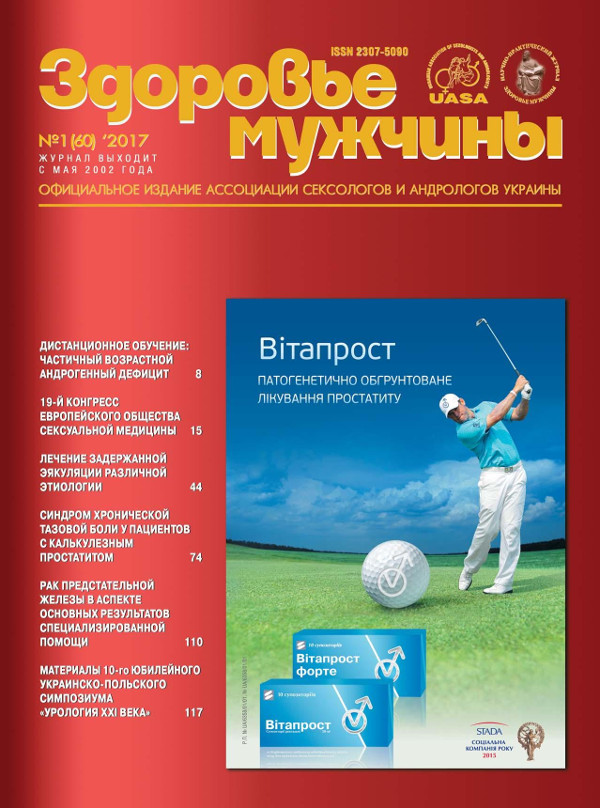Male overactive bladder treatment: new possibilities and perspectives
##plugins.themes.bootstrap3.article.main##
Abstract
Nevertheless CB don’t used for treatment of male with another dysuric conditions and qualitative studies in this problem are absent. So great perspectives are exist for CB treatment of male with another pathology.
##plugins.themes.bootstrap3.article.details##

This work is licensed under a Creative Commons Attribution 4.0 International License.
Authors retain the copyright and grant the journal the first publication of original scientific articles under the Creative Commons Attribution 4.0 International License, which allows others to distribute work with acknowledgment of authorship and first publication in this journal.
References
Abrams P., Cardoso L., Fall M. et al. The standardization of terminology of low urinary tract function: report from the standardization sub_committee of the ICS // Urology. – 2003. – 61. – Р. 37–49.
Bissada N.K., Finkbeiner A.E. Lower urinary tract function and dysfunction. – N.-Y.: ACC, 1978. – 276 p.
Irwin D., Milson I., Reilly K. et al. Prevalence of overactive bladder syndrome: European results from the EPIC study// Eur. Urol. Suppl. – 2006. – Vol. 5, No 2. – P. 115.
Пирогов В.О., Зайцев В.І., Сівбистянова Н.А., Андреєва І.А. Нейрогенний сечовий міхур. Частина 2. Загальні принципи діагностики та лікування// Урологія. – 1997. – No 3. – С. 74–81.
Harvey MA, Baker K, Wells GA. Tolterodine versus oxybutynin in the treatment of urge urinary incontinence: a meta_analysis // Am J. Obstet Gynecol. – 2001. – Vol. 185. – Р. 56–61.
Chapple C.R., Rechberger T., Al-Shukri S. et al. Randomized, double-blind placebo and tolterodine_controlled trial of the once-daily antimuscarinic agent solifenacin in patients with symptomatic overactive bladder // BJU International, – 2004. – Vol. 93. – Р. 303–310.
Chapple C., Fiala R., Gorilovsky L., Pasechnikov S. et al. The STAR study: analysis of symptom severity and treatment response in overactive bladder // Eur. Urol. Suppl. – 2006. – Vol. 5 (2).– Р. 117.
Chancellor M, Zinner N, Whitmore K et al. Efficacy of Solifenacin in patient previously treated with tolterodine extended release 4 mg: result of 12 – week, multicenter, open-label, flexible-dose study. Clin Ther 2008; 30: 1766–81.
Garely AD, Kaufman JM, Sand PK et al. Symptom bother and health-related quality of life outcomes following solifenacin treatment for overactive bladder: the Vesicare Open Label Trial (VOLT). Clin Ther 2006; 28: 1935–46.
Samuels TA, Mitcheson HD, Vardy MD et al. Solifenacin significantly improves overactive bladder symptoms, symptom-associated bother and other patient-related outcomes: Results from VIBRANT, a double-blind, placebo-controlled trial. EAU annual meeting, 2009; (Abstr. 190).
Drake MJ, et al. Long-term Safety and Efficacy of Single-tablet Combinations of Solifenacin and Tamsulosin Oral Controlled Absorption System in Men with Storage and Voiding Lower Urinary Tract Symptoms: Results from the NEPTUNE Study and NEPTUNE II Open-label Extension. Eur Urol (2014), http://dx.doi.org/10.1016/j.eururo.2014.07.013.





